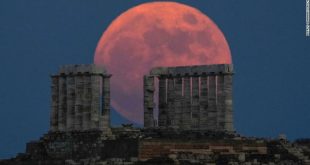Nevine al-Aref – Ahram Online
Egyptian Minister of Tourism and Antiquities Khaled al-Enany, US Ambassador in Cairo, Jonathan Cohen and Luxor Governor Mostafa Alham inaugurated the recently restored and developed Wakalet Al-Geddawy on Sunday. The venue is a caravansary, which was built in 1792 to store trade goods and lodge traveling merchants.
The renovation work was carried out in collaboration with Takween Integrated Community Development, which was funded by the USAID.
“The opening of the Wekalet embodies the Ministry’s vision to preserve Egypt’s archaeological heritage, revitalise the city’s tourism potential by reviving and opening new tourist attractions. It will be a mean to promote tourism, raise tourism and archaeological awareness and create job opportunities for Esna’s inhabitants”, Minister Khaled al-Enany said.
“This is not the first time to collaborate with the USAID as it had financed several similar projects in Luxor, Giza, Karnak and Historic Cairo”, he noted.
Enany announced, “visitors can enter the Wekala for free, as the cost will be included in the ticket of the Edna Temple”.
“Over the past 25 years, the United States has contributed more than $102 Million to preserving dozens of cultural heritage sites throughout Egypt”, US Ambassador Cohen noted.
Hisham Samir, assistant to the Tourism and Antiquities Minister for Projects explained, “the development project involved the restoration and consolidation of the Wekala’s foundations, columns, walls, roofs and wooden ceilings, the implementation of internal ground and soil replacement, the restoration of wooden elements such as doors and windows. In addition, to the restoration and consolidation of the facade, the installation of a modern lighting system and the development of the general site and facilities”.
Wekalet Al-Geddawy features a very beautiful archaeological panorama with the Roman Temple of Esna located beside and the minaret of the ancient mosque, making it a unique model for the rest of Esna’s monuments.
It is a commercial facility built by Hassan Bey Al-Geddawy in 1792 AD and was called Al-Geddawy because Hassan Bey took over the Emirate of Jeddah during the reign of Ali the Great in 1184 AH.
The Wekala was built in two floors of mud bricks. On the ground floor there is a number of shops for displaying goods, while the upper (first) floor was used as a rest house by merchants. It can be reached through two staircases on the North-Western and North-Eastern sides. The main facade of the Wekalat overlooks the famous temple of god Khnum in Esna temple, and in the middle of the entrance block, which is topped by a pointed arch with three pointed arches inside and decorated with brick.






